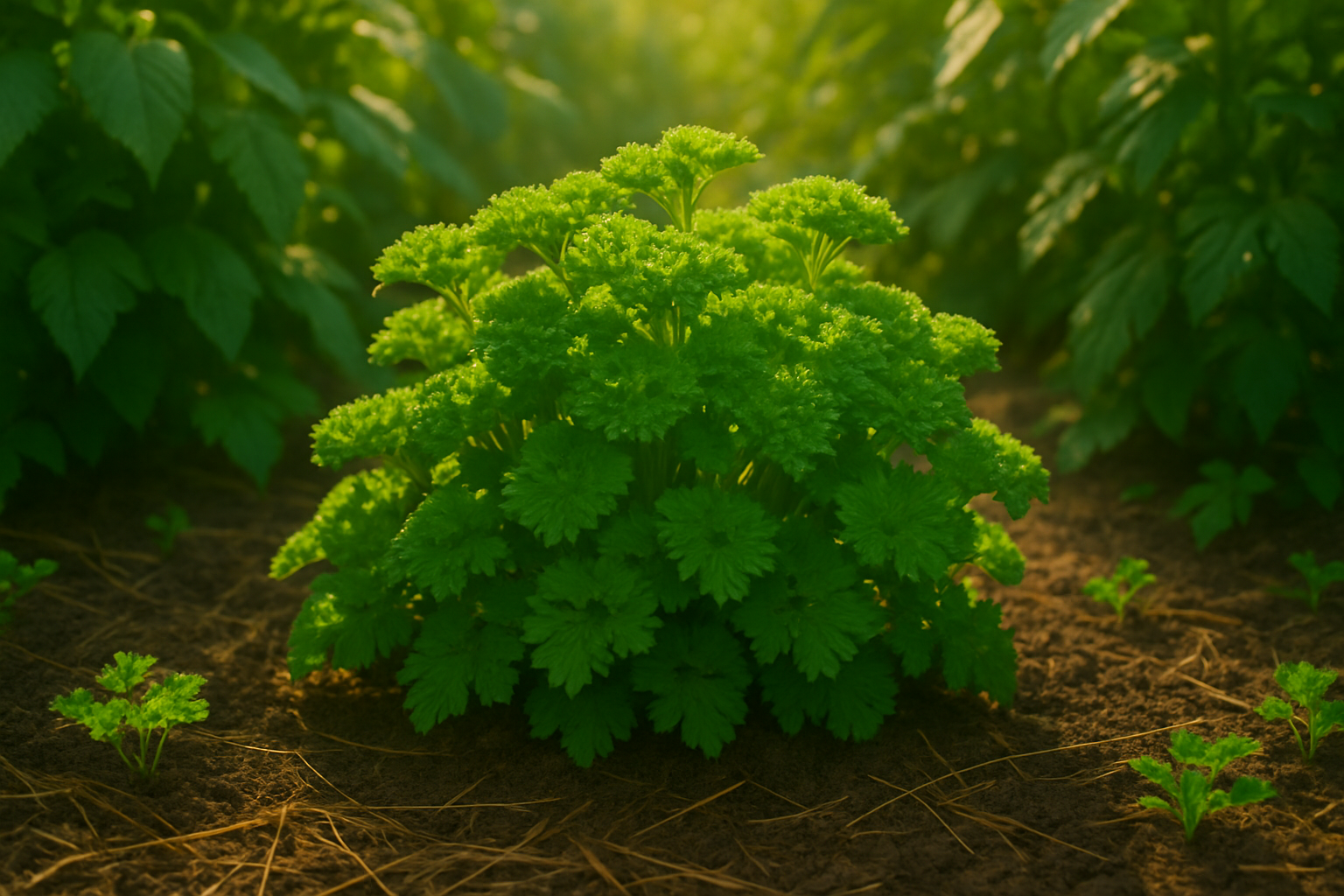Introduction to Growing Parsley in Hot Climates
Growing parsley in hot climates can be both a challenge and a rewarding adventure for gardeners and cooks alike. As one of the world’s most popular herbs, parsley finds its way into countless kitchens with its vibrant flavor and bright green leaves—perfect for everything from salads to sauces. But if you’ve ever tried to grow parsley in hot regions, you’ll know it’s not always a walk in the park.
Rising temperatures, relentless sunshine, and dry spells can cause parsley to bolt prematurely, turn bitter, or simply wither before you have a chance to enjoy it. Parsley especially struggles with heat stress and drying out, issues that often leave gardeners frustrated when their plants go to seed or collapse during the peak of summer.
Despite these hurdles, you don’t have to surrender your herb patch to the sun. By understanding parsley’s unique needs and adapting your approach—choosing the right varieties, picking clever planting locations, and giving your plants a little extra TLC during scorching days—you can enjoy lush, flavorful harvests even when the thermometer soars.
In this article, you’ll discover practical, real-world strategies for keeping parsley cool and thriving in hot climates. From mulching secrets to watering schedules and proven shade solutions, we’ll cover everything you need to grow parsley successfully, no matter how high the mercury climbs.
If you’re ready to enjoy homegrown parsley through the summer, read on for essential tips that will help you beat the heat and keep your garden green.
Understanding Parsley’s Heat Tolerance and Sunlight Needs
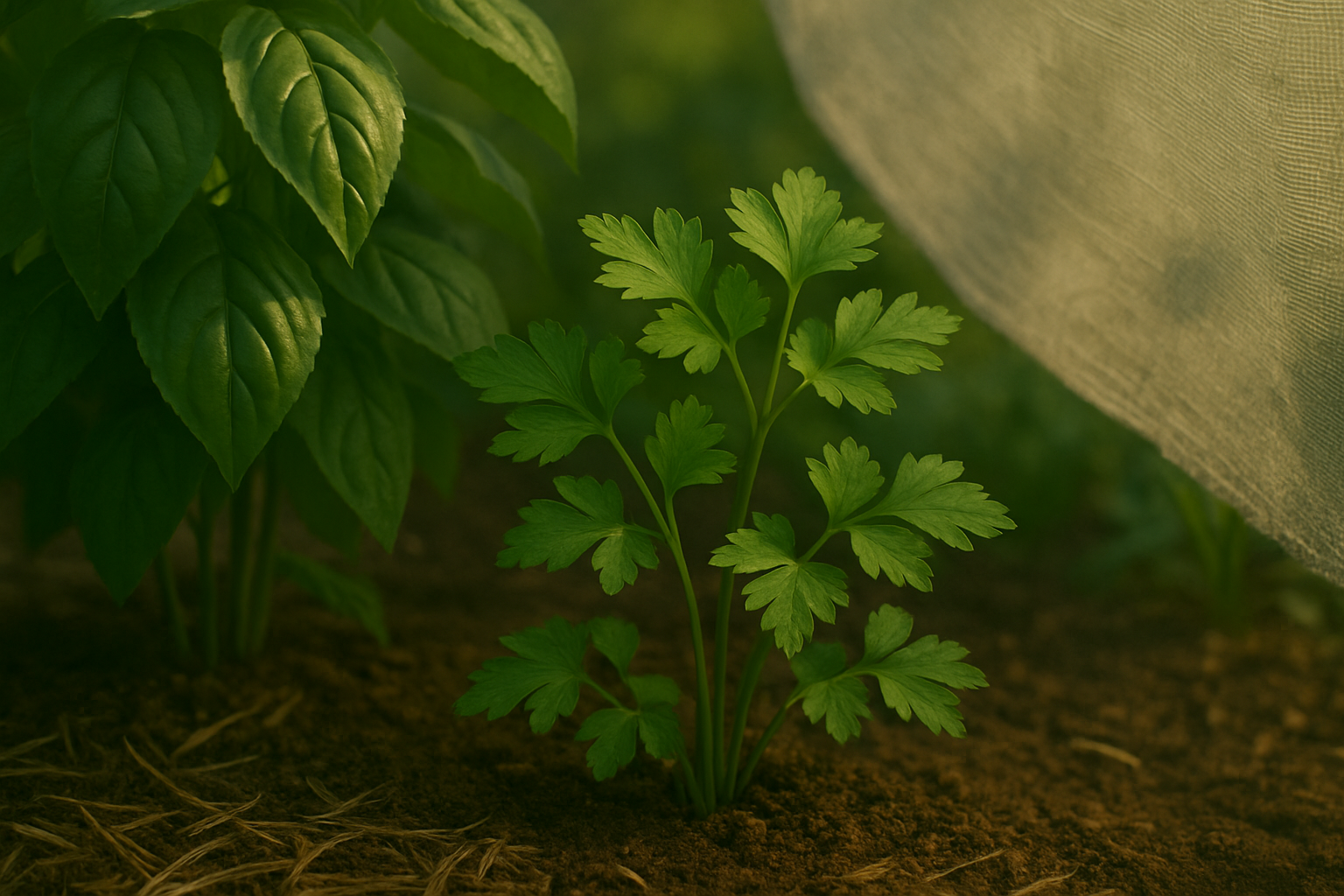
Parsley thrives best in mild temperatures, ideally between 60°F and 75°F (16°C to 24°C), making spring and early fall the perfect times for planting in most regions. When temperatures rise above this range—especially past 85°F (29°C)—parsley can suffer from heat stress. Common signs include leaves wilting during midday sun, yellowing or browning foliage, and premature bolting, where the plant suddenly produces flower stalks and seeds, quickly reducing leaf quality.
Light is equally important: parsley loves full sun for 6-8 hours per day, but in very hot climates, too much direct sunlight can heighten heat stress and cause leaf scorch. To strike the right balance, provide morning sun and afternoon shade if you live somewhere with sweltering summers. This helps the plant soak up the needed light while staying cool during peak heat.
If you’re growing parsley in the ground, choose a spot that gets dappled light beneath taller plants or on the east side of a building. For container or balcony gardeners, move pots to catch the gentle morning sun, then use a sheer curtain, patio umbrella, or shade cloth for protection during the hottest afternoon hours—just 30-40% shade is usually enough. You can also group containers with taller herbs like basil or mint to naturally shield parsley from harsh rays.
Always keep soil moist but not soggy; mulch can help conserve moisture and regulate temperature. In short, parsley rewards attentive placement and care: watch for stress signals, offer shade during heat waves, and you’ll enjoy lush, flavorful leaves all season long.
Preparing Soil and Sowing for Success
For thriving parsley in hot climates, start by choosing soil that’s both well-drained and moisture-retentive—think loamy soil with plenty of organic matter. Heavy clay can hold too much water, while sandy soil dries out quickly, so aim for a blend that feels crumbly in your hand but doesn’t clump.
To prep your garden bed, first loosen the top 8-10 inches with a garden fork or spade. Mix in several inches of compost or well-rotted manure to boost fertility and help the soil hold moisture longer. Applying a thick layer of organic mulch, such as shredded leaves or straw, around your seedlings or seeds will further conserve water and prevent the roots from overheating under the hot sun.
When it comes to planting, you can either direct sow parsley seeds or transplant seedlings, but in particularly hot climates, timing is everything. Direct sowing works if you plant in early spring or late fall, giving seeds a chance to establish before the most intense heat arrives. Keep the soil consistently damp—not soggy—while waiting for the notoriously slow seeds to germinate, which may take three weeks or more.
Alternatively, starting seeds indoors or in a shaded area and then transplanting seedlings after they develop several true leaves can give parsley a head start, especially if late spring temperatures soar. Just remember to transplant in the cooler hours of the day and water well to ease the transition.
Both methods work, but adjusting your timing and soil prep to suit the heat will set your parsley crop up for success.
Watering and Care Strategies for Hot Weather
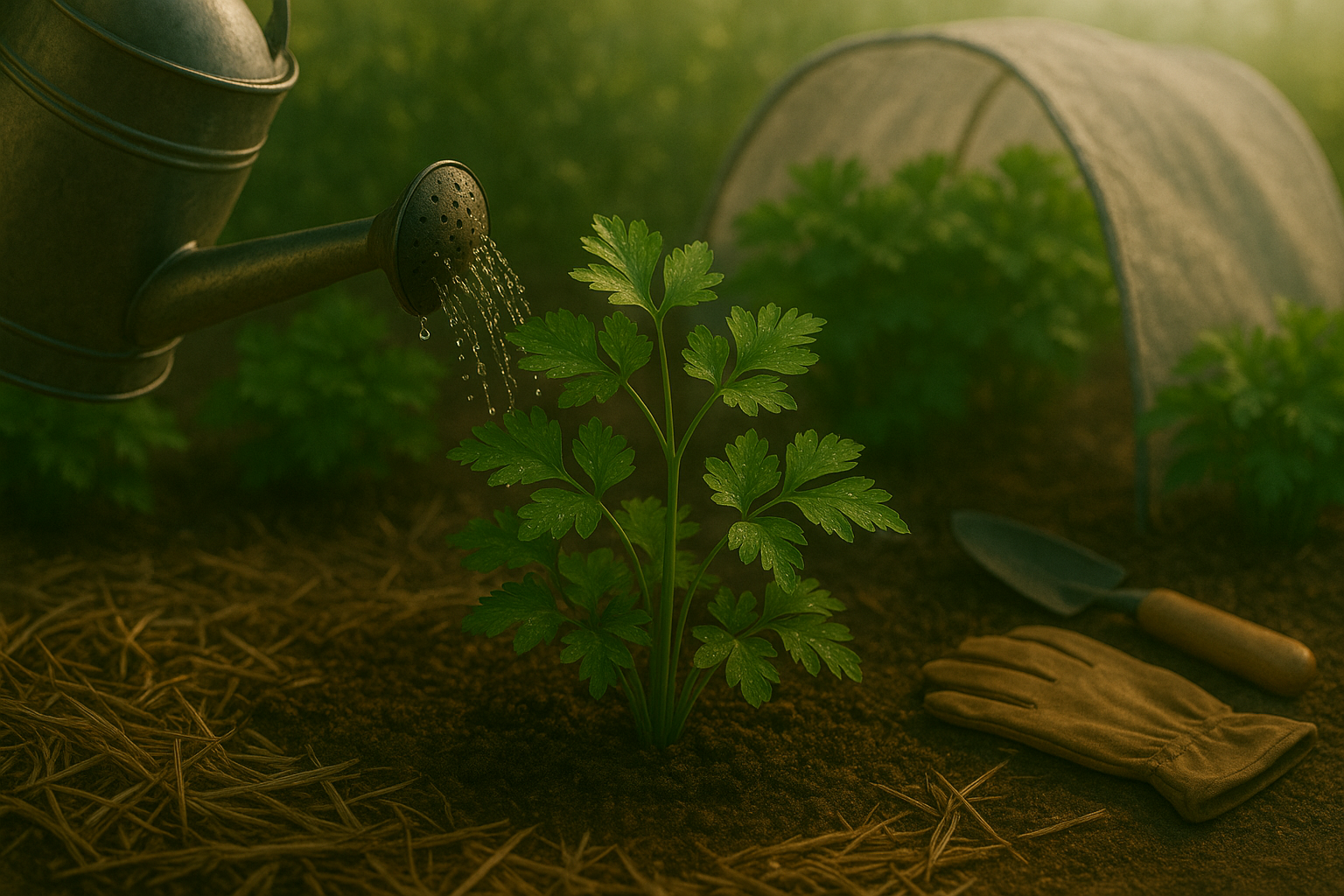
Caring for parsley in hot weather means paying close attention to watering and temperature control. During spells of high heat, water your parsley early in the morning or late in the evening when evaporation rates are lowest. Aim to irrigate deeply, soaking the soil to at least 6-8 inches, two or three times a week, instead of giving light daily sprinkles. This encourages roots to grow deeper into the soil, making them more resilient to surface heat and drying.
Mixing in organic mulch—like shredded leaves, straw, or compost—around the base of your plants creates a protective layer, locking in moisture and shading the roots from direct sun. You can also fashion simple shade cloths or use old bedsheets draped over hoops above your crops during extreme temperatures, offering crucial relief from the afternoon sun.
Fertilizing parsley in the summer requires a gentle hand; use a slow-release, balanced fertilizer once a month or apply diluted liquid seaweed every few weeks. Too much nitrogen can exacerbate heat stress, so avoid overfeeding.
Keep an eye out for signs of drought or heat stress, such as yellowing, wilting, or scorched leaf edges. If your parsley looks limp or faded by midday, intervene promptly by increasing shade, ensuring your mulch is intact, and checking the soil’s moisture level with your finger—if the top inch is dry, it’s time to water.
With these strategies, your parsley will stay lush, flavorful, and robust even through the most sweltering days.
Preventing and Managing Common Hot Climate Problems
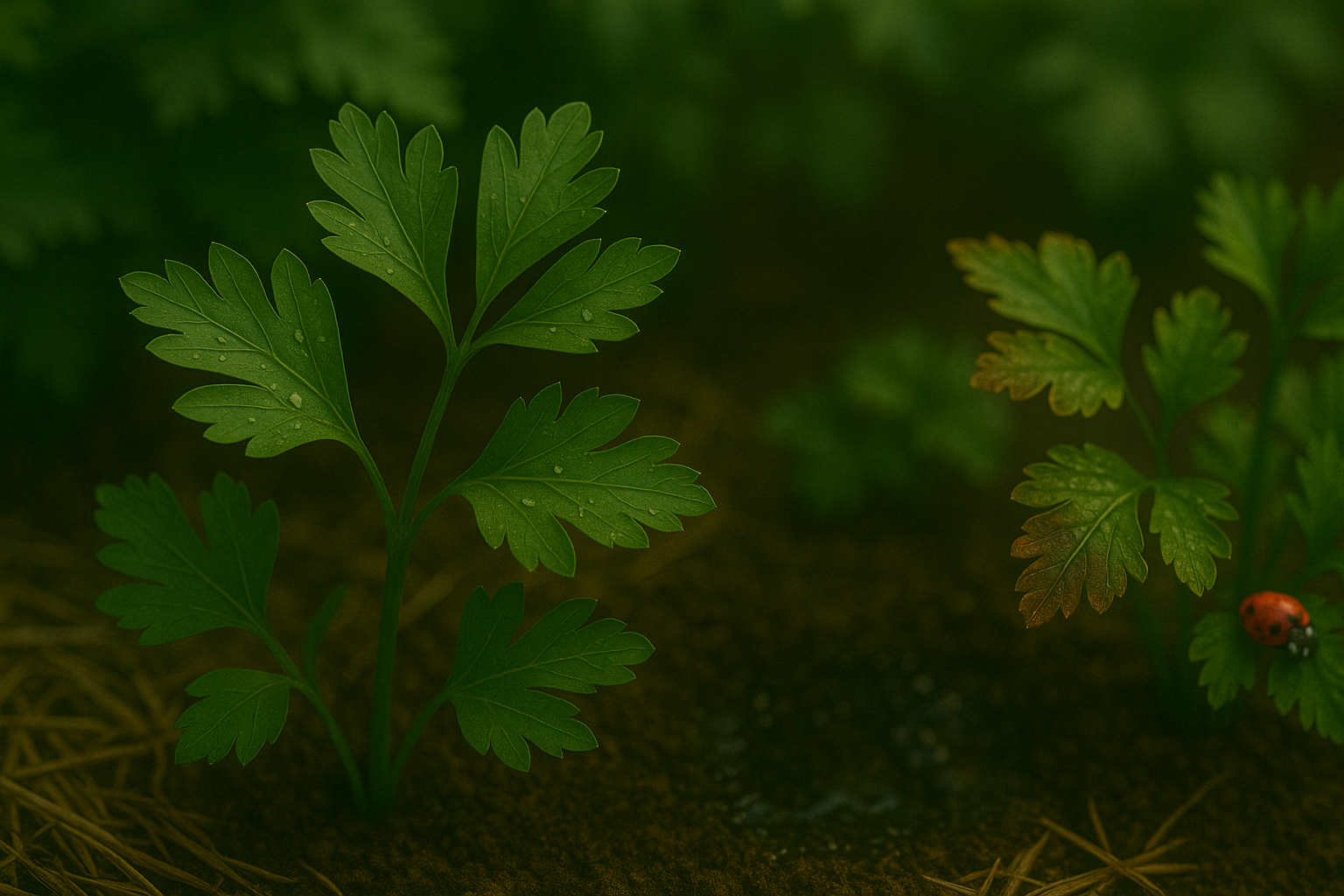
Growing parsley in hot climates comes with unique challenges, but with some planning and attentive care, you can keep your plants healthy despite the heat. One of the most common issues gardeners face is bolting, where parsley shoots up tall stalks and starts to flower prematurely. This often happens when temperatures spike or days get too long, resulting in bitter leaves and an early end to harvests.
To prevent bolting, choose bolt-resistant varieties and plant in early spring or late summer to avoid peak heat. Provide some afternoon shade using row covers or shade cloth to keep plants cooler, and mulch heavily to retain soil moisture and regulate temperature.
Leaf scorch, another hot-weather problem, appears as brown, crispy edges on leaves due to strong sun or drought stress. Make sure to water parsley deeply and consistently, ideally at the base and in the morning, to avoid evaporation and fungal issues.
Pests like aphids and leaf miners thrive in warm weather and can wreak havoc on tender parsley leaves. Check your plants daily for clusters of tiny green or black aphids, especially on new growth, and for slender trails inside leaves caused by leaf miners.
Remove minor infestations by spraying plants with a strong jet of water or squishing pests by hand. For greater control, introduce natural predators like ladybugs or lacewings, both of which feast on aphids. Installing floating row covers can also block adult insects from laying eggs on leaves.
To stay organic and avoid harming your parsley, refrain from harsh chemicals. Instead, use neem oil, insecticidal soap, or homemade garlic and pepper sprays for stubborn infestations. Keep the garden area clean and weed-free, as debris often harbors pests and disease.
By staying vigilant with these smart, sustainable methods, you can enjoy a thriving parsley patch even when the temperature soars.
Harvesting and Storing Parsley in Warm Conditions
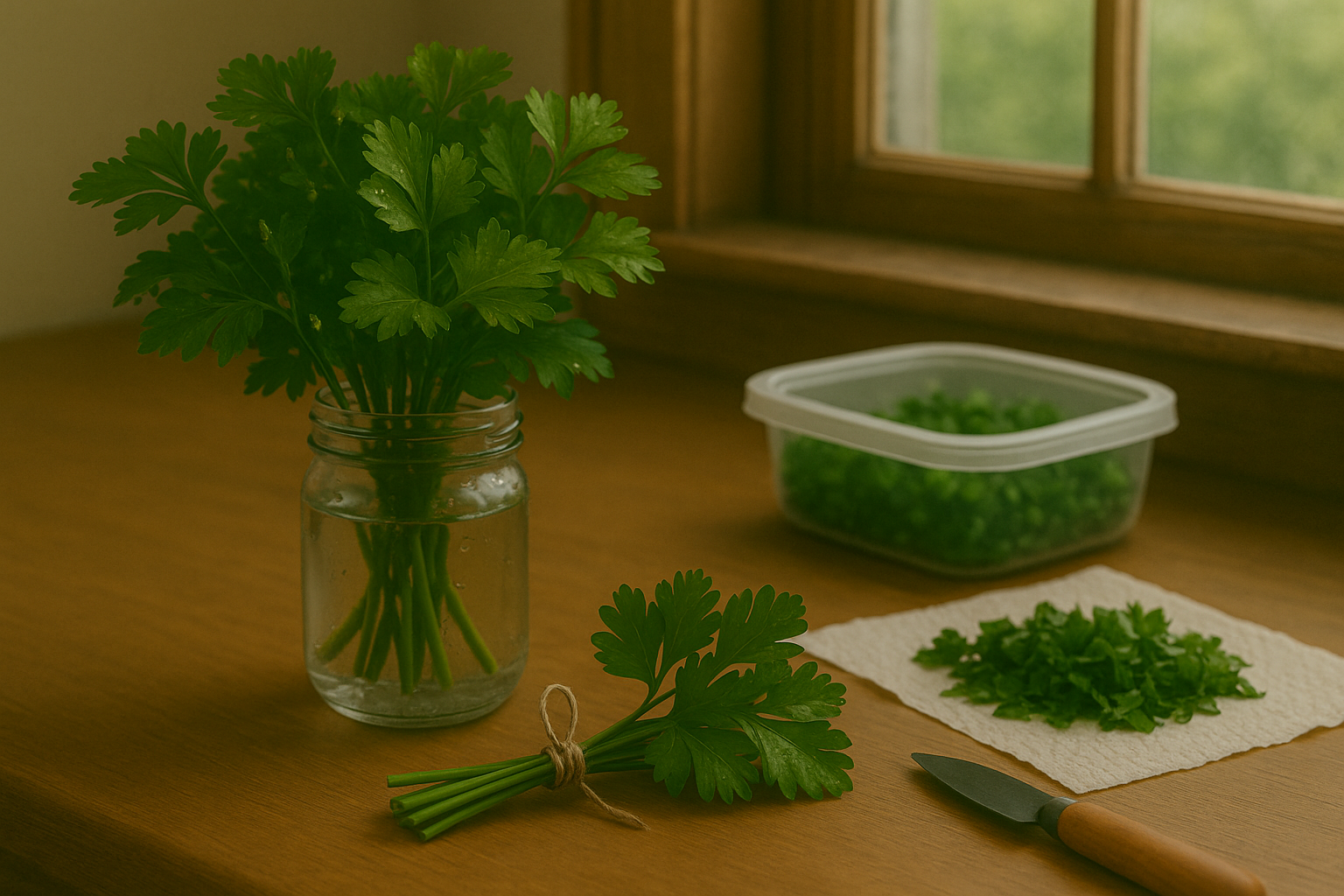
To get the best flavor from your parsley in warm conditions, harvest it early in the morning when the leaves are crisp and packed with oils. Snip the outer stems first using sharp scissors, just above the soil level, to encourage new growth and help the plant keep producing throughout the season. Always avoid taking more than a third of the plant at once—this keeps your parsley healthy and thriving.
After picking, rinse the stems in cool water to remove dirt and gently pat them dry with a towel. For short-term use, keep parsley fresh by placing the stems in a glass of water like a bouquet, loosely covering the leaves with a plastic bag, and storing it in the refrigerator—change the water every few days.
If you need to keep parsley longer, bundle washed and dried sprigs and store them in an airtight bag with a paper towel to absorb extra moisture. For even longer preservation, chop leaves and freeze them in ice cube trays with a splash of water or olive oil, or air-dry the stems in a cool, shaded place until crispy, then store in a sealed container away from light and heat. These steps help you enjoy parsley’s vibrant flavor well after harvest.
Conclusion & Quick Recap
Growing parsley in hot climates is definitely doable with the right strategies. Focus on planting in partial shade to protect delicate leaves from the scorching sun, and use mulch to help the soil retain moisture. Water deeply in the early morning to prevent evaporation, and choose heat-tolerant varieties like ‘Italian Giant’ for the best results.
Don’t forget to harvest the outer leaves regularly—this encourages bushier growth and keeps your plant healthy. Remember, every garden is unique, so experiment with shade cloth, container gardening, or different watering routines to discover what works best in your space.
If you’ve tried any of these tips or have questions about your parsley-growing journey, drop a comment below—we love hearing about your experiences and are here to help!
